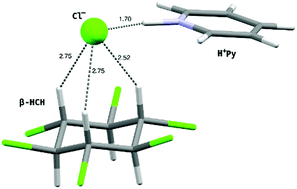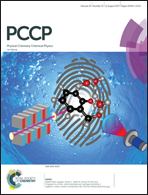The nature of intermolecular interactions in pyridinium–anion–β-hexachlorocyclohexane molecular crystals†
Abstract
The nature of intermolecular interactions in different molecular crystal configurations formed by pyridinium cations, chloride or bromide anions as well as β-hexachlorocyclohexane (β-HCH) molecules has been investigated using high level ab initio quantum chemistry methods. Several molecular subsystems taken from the crystal unit cell were considered and their supramolecular energy stability was analyzed in detail using high level density-fitting local electron correlation (DF-LMP2 and DF-LCCSD(T)) methods together with the aug-cc-pVTZ basis set. In order to elucidate the nature of the intermolecular interactions between different fragments, the symmetry adapted perturbation theory (SAPT) method up to “2+3” truncation expansion was applied. The SAPT analysis has shown that the “simple” pair model of a halide anion–β-HCH complex is not adequate to properly describe the stability of the crystals, since the charge polarization induced by the cation counterpart on the halide anion significantly changes the nature and the magnitude of the anion–β-HCH interaction.



 Please wait while we load your content...
Please wait while we load your content...